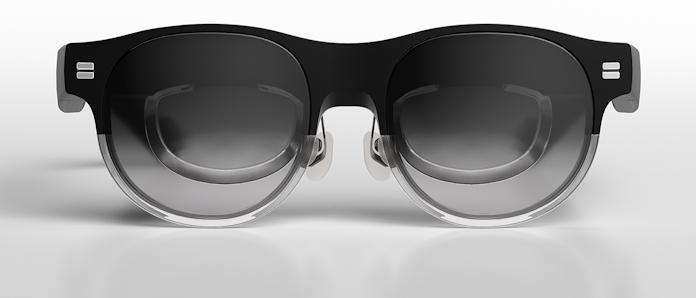At this year’s Consumer Electronics Show (CES), the usual crowd has gathered to tell everyone about their new and exciting gadgets. That crowd includes Asus, Samsung, LG, Nvidia, Intel… you get it. As usual, there has been a mix of weird and wacky stuff along with the usual assortment of familiar rectangles — laptops, TVs, etc.
Asus announced more than a few of their own rectangles but those aren’t as exciting as the Asus AirVision M1 for the simple fact that you don’t see as many wearable displays as you do rectangles.
Asus clears the Air(Vision)
It might look like a competitor to Apple’s Vision Pro or Sony’s new creator-focused XR system but it isn’t as advanced as those — the AirVision M1 limits itself to wearable display capabilities only. If you’ve seen a recent Asus display you’ll know that’s definitely not a bad thing.
The AirVision M1 features dual FHD micro OLED displays (one for each eye) with a 57-degree vertical field of view and a reported peak brightness of up to 1,100 nits. It boasts low response times and 95% coverage of the DCI-P3 colour gamut, according to Asus, but the best part has to be its ability to generate multiple virtual screens at once.
Asus is marketing it as a solution for the folks who constantly find themselves working on the go where a second display isn’t feasible. And just as well. They’re too busy looking at spreadsheets to consider how silly they might look moving their head towards screens only they can see. There are also built-in noise-cancelling microphones and speakers for frequent remote workers.
Controlling the thing is done via a touchpad close to a user’s left temple and moving your head around. The touchpad allows activating 3D mode, adjusting brightness, and organising your virtual displays in the layout and aspect ratio you want and a turn of your head will change focus to a different virtual display.
This isn’t a standalone device so it’ll need to be tethered to a compatible smartphone, console, or laptop via a USB-C cable. Asus says the AirVision M1 can connect to any device that supports DisplayPort Alt Mode through a USB-C port although a Windows machine is needed to take full advantage of all the features. No pricing or availability info has turned up just yet.





